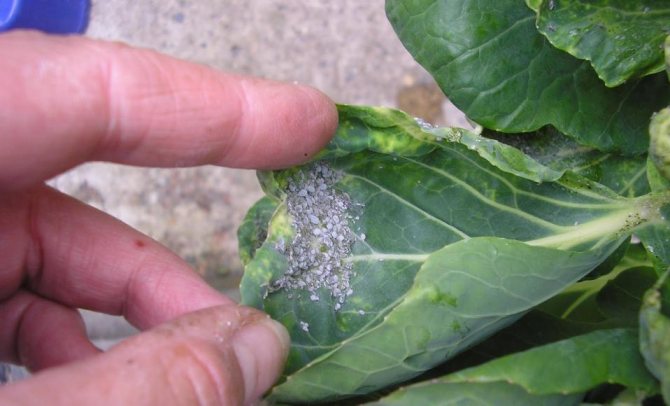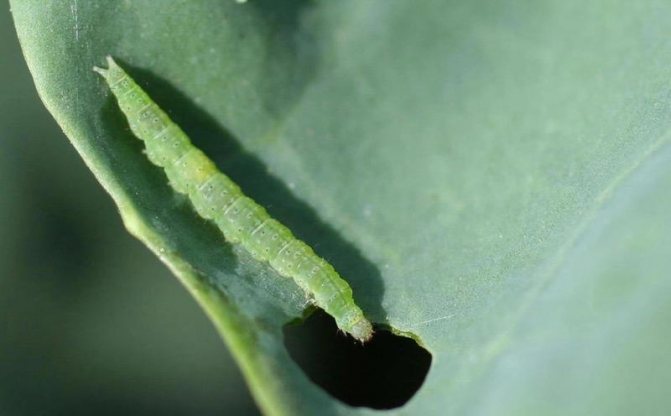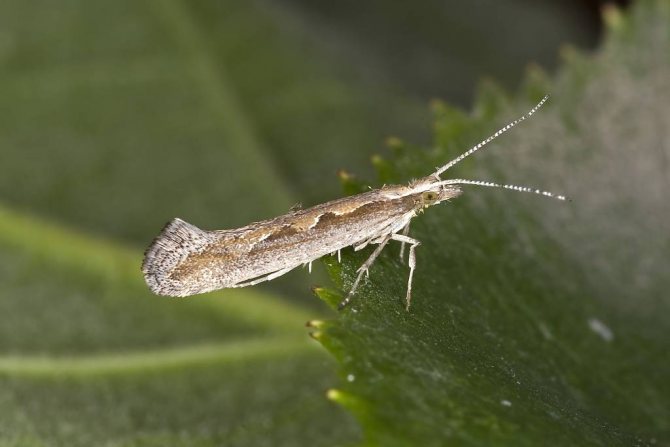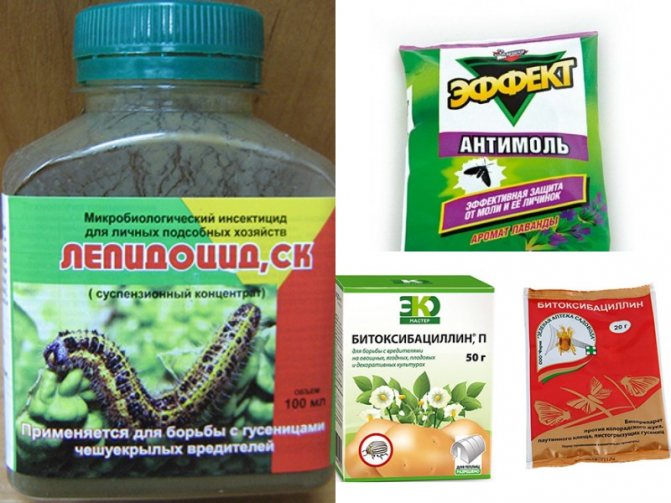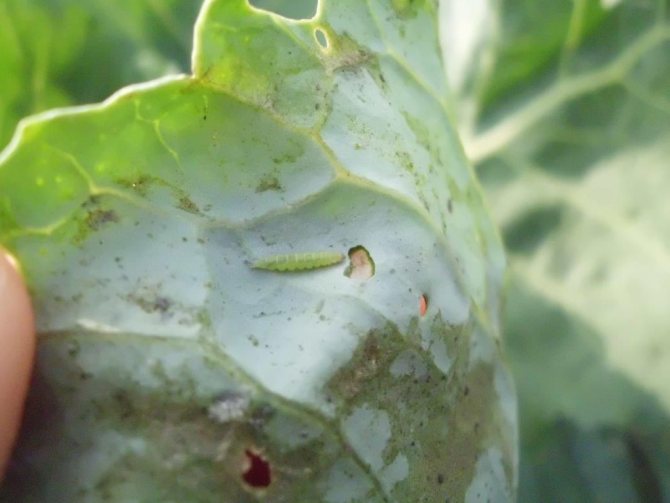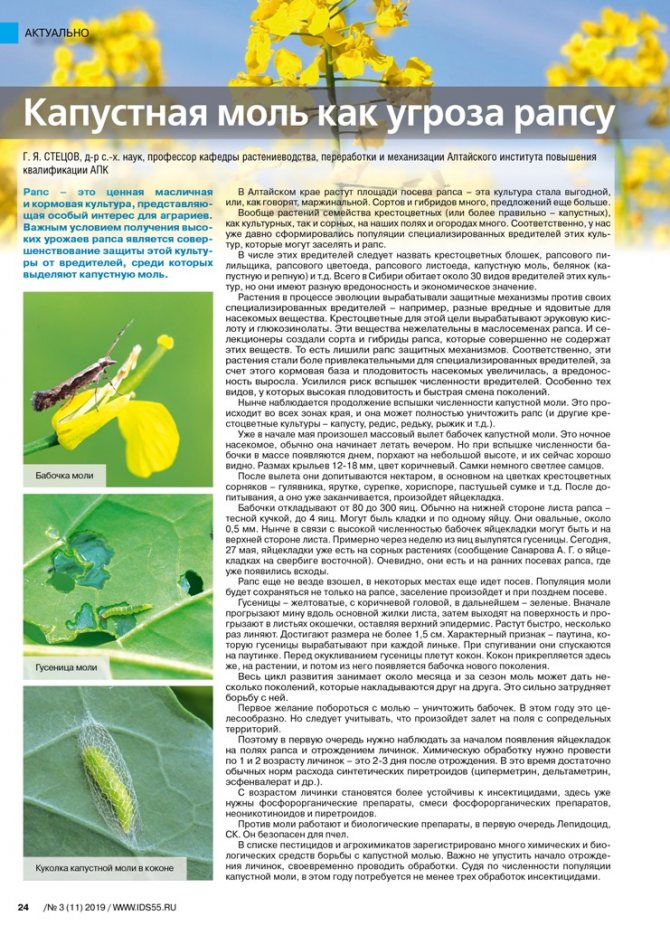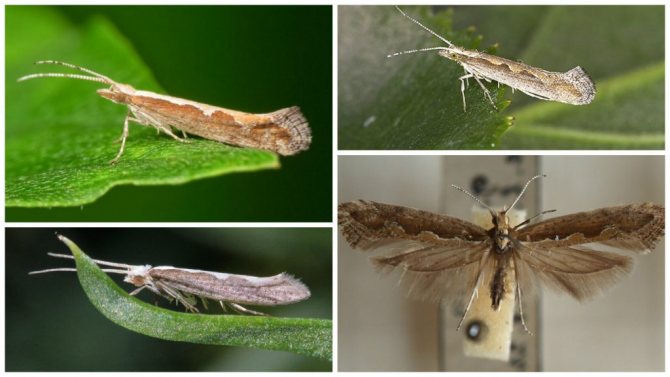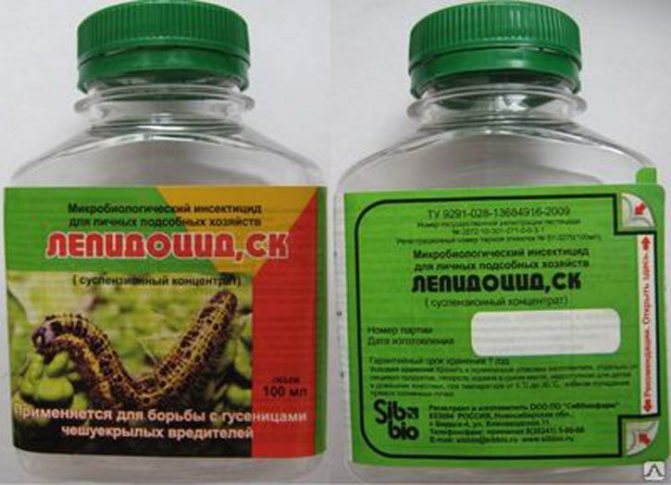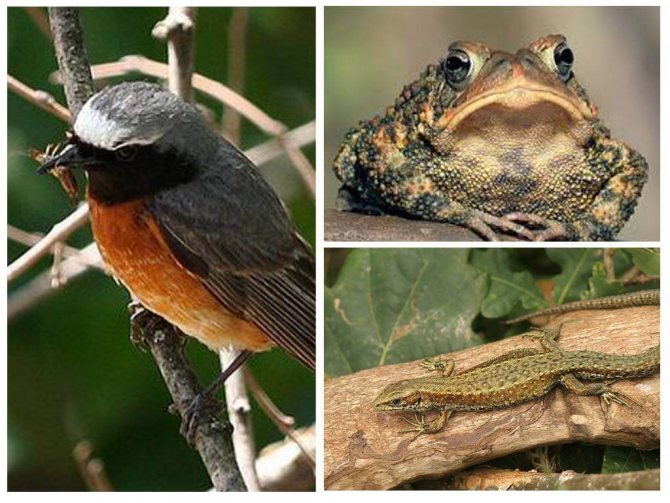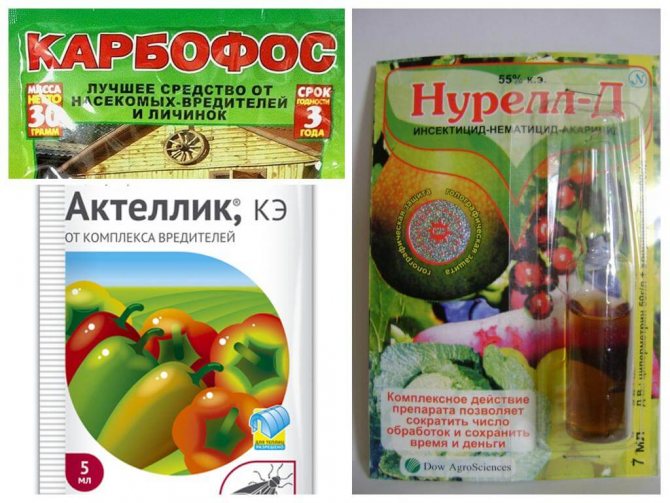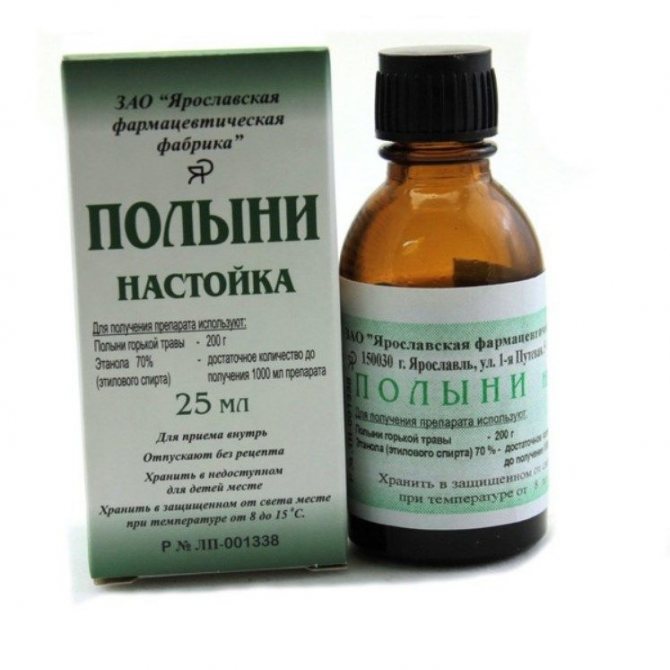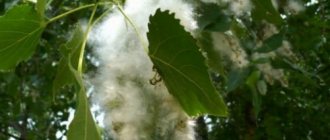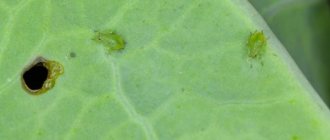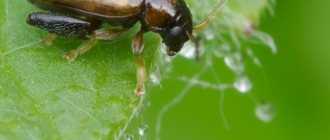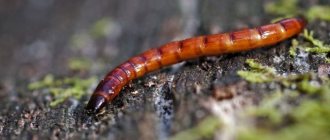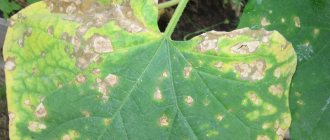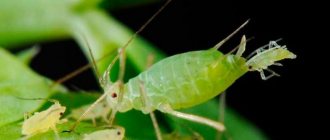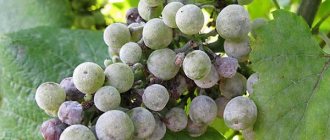The main goal of any gardener is to obtain a quality harvest. However, garden pests attracted by cultivated plants can spoil expectations. One of the most common types of parasites is the cabbage moth. It is not hard to guess why it got exactly this name - any variety of cabbage for insects is the main food, a place of life and reproduction. Therefore, in order to preserve the harvest, it is necessary to carry out the treatment of plants against parasites in a timely manner.
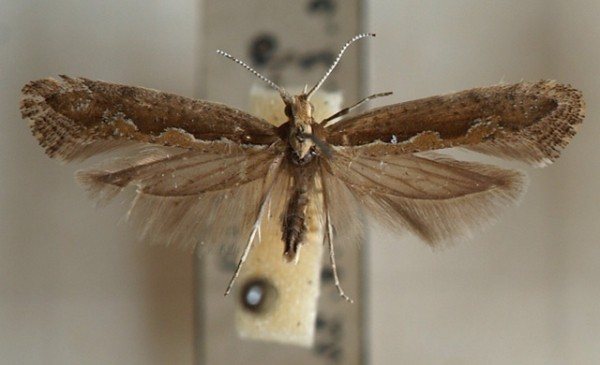
Cabbage moth - what it looks like, photo
The cabbage moth is a very small butterfly. Perhaps someone noticed that, approaching the garden, small butterflies, similar to moths, fly out of the grass. In principle, this is a moth, but larger than the usual one that happens in an apartment. The butterfly itself is small, with spread wings, its length is no more than 14 mm. The insect in a sitting position has a narrow grayish body, and on its head there are 2 long whiskers. What the pest looks like, look at the photo.
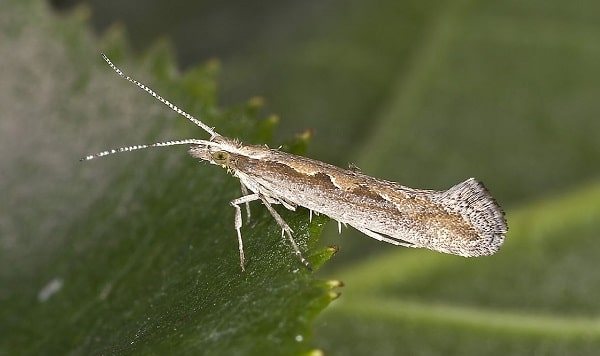

The larvae themselves are also small, you cannot immediately notice them, especially since they are on the underside of the leaf. But the holes on the sheet can be seen immediately.


The full developmental cycle of the moth lasts 30-35 days. Oviposition lasts 10-20 days. Females lay 1-4 eggs on the underside or leaf petiole. The egg is oval, up to 0.5 mm long, with small dots on the surface. The length of the older caterpillar is 7-11 millimeters. Pupa 7 mm long, pale green at first, then darkens. It is located in a silvery-white loose cocoon up to 8 mm long, rather firmly attached to the substrate.
Unlike whitefly, another pest that feeds on everything, the moth prefers exclusively cruciferous plants. These are all types of cabbage, radish, radish, turnip, mustard and rapeseed. But most of all, the pest causes damage to the cabbage.
Description of the pest: appearance and characteristics
The cabbage moth belongs to the ermine moth family. These butterflies are known for having a slender elongated body, and some species of ermine moths are brightly and contrastingly colored.
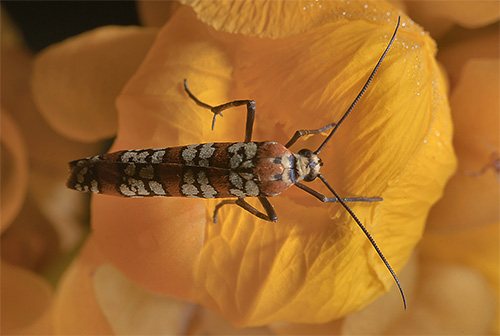

However, this does not apply to the cabbage moth. She is a butterfly with a discreet, patronizing coloration. Her wings are a neat light brown color with a light pattern in the center. When a butterfly is resting on a plant, when viewed from above, it looks like a small straw.
The butterfly's wings are about 7-8 mm long. The cabbage moth is an unimportant flyer, and, as a rule, the butterfly does not fly away from the place where it leaves the pupa. Its wings have a beautiful fringe at the edges, and at the ends, when the insect is calm, they slightly lift upwards. The photo below shows a butterfly seen from above:
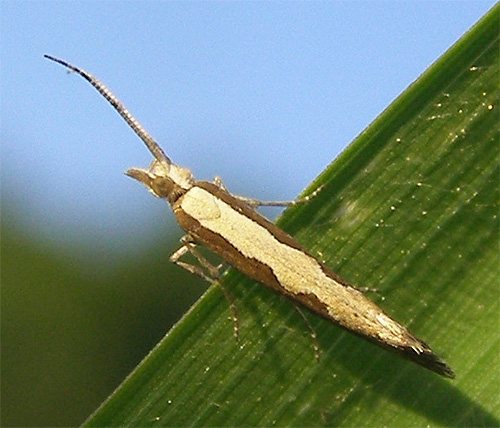

and below - it is, only from the side:
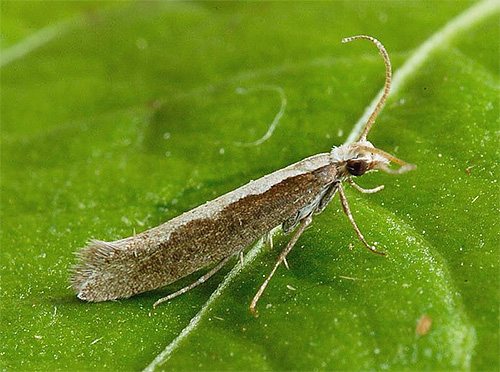

But the caterpillar of the cabbage moth is painted in a pale green color. Its body is covered with fine hairs, its head is almost brown. Caterpillars are rarely found in large clusters; as a rule, one or two larvae are present on one plant.
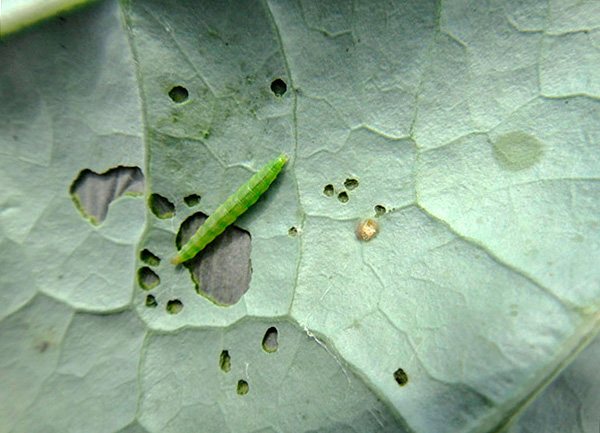

The eggs of the cabbage moth are small and elongated, reaching 0.44 mm in length and 0.26 mm in width. The color of the eggs is green, like the fodder plant itself.
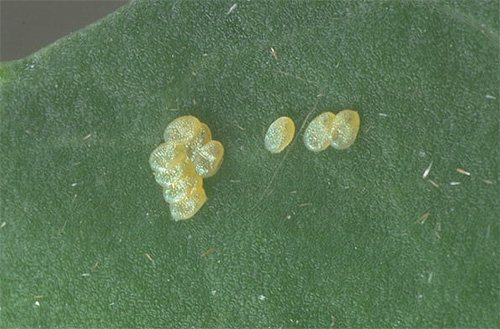

The pupa of the cabbage moth is dark yellow in color and is usually found on the stems and leaves of the plant.
Why is cabbage moth dangerous?
If you don't fight butterflies, you can instantly lose your crop. This is precisely the main danger.
The butterfly flies at twilight or at night. If you saw that they fly even during the day, this is a sign that there are too many pests and urgent action is needed. Rather, it is not the butterflies themselves that bring harm to the plants, but their larvae - small green caterpillars, which very quickly, because there are a lot of them, first eat out small holes on the cabbage leaves.
In addition to damaged leaves, the following signs indicate the presence of a pest:
- spots on the leaves,
- a pitted kidney of tying a head of cabbage,
- the leaves begin to dry out,
- poor plant growth.
A large number of caterpillar larvae and lost time can lead to the fact that the entire leaf, the head ovary, will be eaten, leaving only veins.
As a result of such an invasion of pests, the presentation is lost, the vegetable is poorly stored and quickly deteriorates. Plants are especially strongly affected in hot weather.


Lifestyle and reproduction
The dietary preferences of cabbage moth include not only all types of cabbage, but also other cruciferous plants: rapeseed, turnip, turnip, radish, radish, mustard, crispy lettuce. For development, a minimum temperature of 4 ° C is required. Moreover, the higher the temperature, the less chances of vegetables.
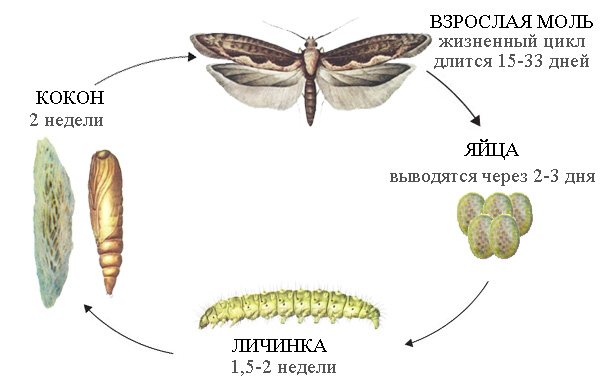

In different areas, depending on weather conditions, up to 6 generations of pests develop. The female cabbage moth lays an average of 70-170 eggs, while the clutch is not massive - several eggs per plant. After 2-3 days, the larvae appear and begin to master the leaves. In 1.5-2 weeks, they are able to gnaw the way to the point of growth and, thereby, leave you without a crop. Under the protection of numerous leaves, the pest pupates and, after a couple of weeks, an adult cabbage moth is born, ready for further reproduction.
The life cycle under favorable conditions is 15-33 days.
The greatest harm is caused by the larvae of the cabbage moth: by storing up energy for further growth, they can completely destroy the crop.
Pupae and adult moths overwinter in the ground or on weeds, stumps, cabbage leaves left after harvest.
How to get rid of cabbage moth
It is quite difficult to fight the pest, since even some chemicals do not act on it, this is such a resistant moth. But to cope with it, you need to know its biological characteristics.
The flight of a butterfly takes a long time - this is an extended stage in time. At the same time, the full development cycle of the pest, from laying eggs to pupation, has a shortened period. Therefore, on the plantings of cruciferous crops, all ages of a given pest are usually observed, both eggs and caterpillars, pupae and adult pests. To overcome this pest, some one-time treatment will not help. The struggle must continue constantly and comprehensively.
In addition, after processing the planting from moths in its area, it may disappear for a while. But again, come back to you from the neighboring abandoned area, where the weeds have cruciferous plants and food for her.
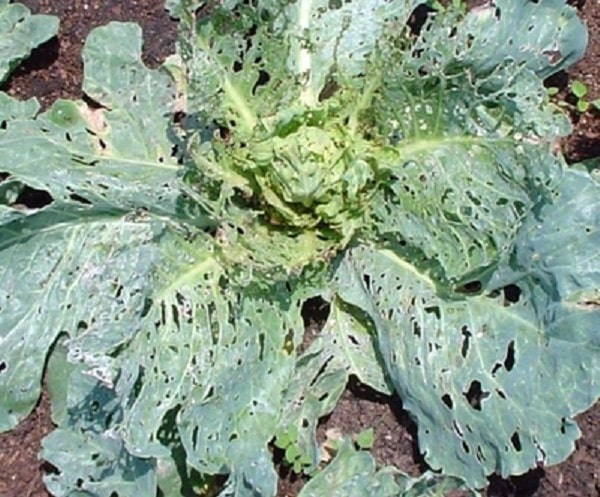

Preventive measures play an important role in the fight against it.
- It is necessary to keep your site in order, that is, mow the grass, weed out the weeds, so that the pest is not able to breed. It should be noted that the cabbage moth appears early when the temperature rises above + 10 ° C. And if there is no food for her in the beds, she calmly gets along in the weeds.
- During the summer, the development cycle from egg laying to pupation occurs several times. From autumn to winter, pupae overwinter mainly on stumps and leaves left in the garden. A big mistake is to leave cabbage leftovers in the garden before winter. Therefore, after complete harvesting from the beds in the fall, it is necessary to completely remove all plant residues.
- Dig deeply after harvesting the beds where the cabbage was grown, turn over in large clods so that all pests are frozen.
- Observe the crop rotation, although it is not always possible to do this. In addition, on thickened plantings, the plants do not receive enough nutrition, the plants grow sickly, frail, and moths readily settle on such plants and multiply faster.


Prevention of the appearance
Getting rid of cabbage moth caterpillars can be tricky. Therefore, the best way to deal with such pests is prevention. Although it may not provide 100 percent protection, it will at least reduce the number of voracious garden insects. So we recommend that you carry out the following activities:
- Dig deeply before winter.
- Do not forget about careful plowing and destruction of crop residues, green manure plants, etc. They are the favorite wintering place for cabbage butterfly pupae.
- Monitor the amount of weeds at all times. Moreover, and near the site. Abundant grass growing around the perimeter of the garden is a breeding ground for these pests.
- Watch the crop rotation. Avoid planting crucifers in the same area every year.
- Check cabbage leaves regularly for eggs and cabbage moth caterpillars.
Folk remedies for fighting cabbage moth
Previously, there were no such powerful pest control agents as insecticides, so people were no less successful in fighting them with the help of folk remedies. For the sake of justice, it should be noted that folk remedies are best used ahead of time in order to prevent the arrival of moths or when there are still very few insects. These methods have a drawback: their effect ceases after rains and therefore the treatments will need to be repeated again.
What is in the arsenal of folk methods?
- Spraying plants with 10% ammonia solution. 2 tbsp. l. ammonia is diluted in 10 liters of water and immediately irrigated cabbage. In addition to pest control, you also feed the plants with nitrogen, the plant will respond to such feeding with the rapid growth of the leaf mass. Repeat the treatment in 10-14 days.


- Dusting plants with a mixture of ash and tobacco dust. A similar method is also aimed at exterminating the cruciferous flea.
- The moth is afraid of strong odors. Therefore, between plantings, you can spread out rags soaked in birch tar, or branches of wormwood, mint, lavender, chopped bay leaves, citrus peels.
- Sprinkle a mixture of flour and baking soda, wood ash and baking soda, or baking soda mixed with ground red hot pepper under the sheets. Soda also helps to deoxidize the soil, and acidic soil is known to promote the development of keel in cabbage.
- To prevent moths from laying eggs, dust the plants with sifted wood ash. Better yet, make a powdering mixture like this. Add a box of tooth mint powder to 2 liters of ash, 2 tbsp each. l. black and red ground pepper (they can be used separately) and mustard powder. Stir the mixture thoroughly to obtain a homogeneous powder, and sprinkle under the cabbage bushes. This method is better suited as a preventive measure.
Dusting and sprinkling plants should be repeated after each rain and watering.
- 2 kg of leaves of tomato tops, which, for example, remained after the formation of a tomato bush, pour 5 liters of water, boil over low heat for half an hour, then cool the broth and strain. Dilute the resulting amount of broth with water 3 times, add 60 g of laundry soap grated on a grater, stir well. Pour the spray into the container and spray the planting with the resulting broth.
- 500 g of chopped dandelion leaves, pour 10 liters of water, add 1 tbsp. l. liquid soap, let it brew for 3 hours. Spray the plants from all sides with the resulting infusion, pay special attention to the underside of the leaves, where there may be caterpillars.
- Attract feathered friends - birds to the site, make birdhouses for them, birds help get rid of cabbage moths, since these are their main enemies.
Now on sale there is an extract of needles - this is an insecticide - an immunomodulator, a biological agent that also protects our plants from pests. Of course, its effect may be weaker, but to some extent the extract will also help to contain the general mass reproduction of pests.


Insecticides for moths on cabbage
Despite the fact that the larvae - caterpillars - bring harm to the plant, it is necessary to fight with the butterflies themselves so that they cannot lay eggs on the leaves. And when there are a lot of butterflies and folk remedies cannot help, chemicals come to the rescue - insecticides. Then what chemicals are most often used by gardeners to combat cabbage moth?
Aktara
The drug belongs to contact-intestinal insecticides, highly effective, economical, acts quickly. Efficiency does not depend on weather conditions. It is used against a wide range of insect pests, does not work on beneficial insects, earthworms and birds. But it is poisonous for pollinating insects, therefore it is not recommended to use the drug during flowering of plants.
Available in the form of powder, granules, tablets. For use on cabbage, dilute 3 g of the product in 10 liters of water and pour the solution under the root of the plant. It is applied immediately after dilution, it cannot be stored. When processing Aktara, it copes well with caterpillars - larvae.
Intavir
Also, a contact-intestinal insecticide, its main advantage is that it is not toxic to plants and is resistant to sunlight, so it can be used in the daytime in sunlight. I already wrote about it in more detail, if you are interested, follow the link.
Since cabbage moth is very resistant to insecticides, using Intavir, you should dilute 2 tablets in 5 liters of water and spray the plants. Re-processing is carried out after 7-10 days. The drug can be used no more than 3 times, the pest just gets used to the drug.
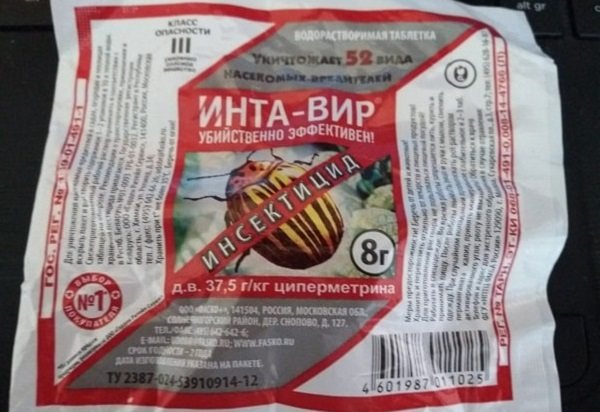

Alatar
The tool destroys 28 types of pests, including cabbage moth. It is produced in the form of a concentrated emulsion in 5 ml ampoules and 25 ml vials. To combat moths, the ampoule is diluted with 3-4 liters of water, and the plants are sprayed with the solution early in the morning, in the evening after sunset or in cloudy weather.
According to gardeners' reviews, this remedy is the most effective of all other intestinal-contact insecticides. The active substance causes paralysis of larvae in adults as well. In addition, the composition contains a special substance - an adhesive, which prevents the product from being washed off the leaves during rain, that is, the drug has its effect for a rather long time.


Actellic
Means of contact-intestinal action, the active substance acts on both flying insects and crawling caterpillars. It is produced in the form of an oily emulsion in ampoules and cans. It is convenient to use, economical, it is enough to dilute 1 ampoule of the product (2 ml) in 1-2 liters of warm water, spray the plants. The amount of solution is consumed per 10 sq. m.
Among the disadvantages is the high toxicity of the agent. Actellik is a potent agent, so it is not recommended to exceed its dosage. Another disadvantage is the strong, pungent odor.
Dear readers, it is quite difficult to fight the cabbage moth, but it is still better to prevent its appearance. And if you notice the first signs, urgently start fighting with her, otherwise it will be more difficult to overcome it later.
Biological agents
Bacteriological (biological) agents are effective against cabbage moth. These are also insecticides. Only they contain bacteria that have a lethal effect on pests and can quickly destroy them in the garden.Moreover, such biological products are safe for animals and humans. After all, they do not contain chemically harmful components.
However, when using bacteriological agents against cabbage moth, it should be remembered that they act only 3-4 days after the start of application. You should not hope for an instant result.
Another important point concerns the fact that the pest often gets used to and adapts to a particular type of drug. Therefore, it is not recommended to constantly use the same tool. Its effectiveness is greatly reduced. This means that if one biological insecticide did not work, then feel free to connect another. Or even switch to chemical agents if you can't get rid of the cabbage moth and its caterpillars.
Along the way, you can also carry out manual collection of parasites. On average, it is possible to collect about 30% of insects from one plant. In this way, the larger part usually remains invisible to the grower. Therefore, we would not recommend limiting ourselves only to physical methods of dealing with cabbage moth.

